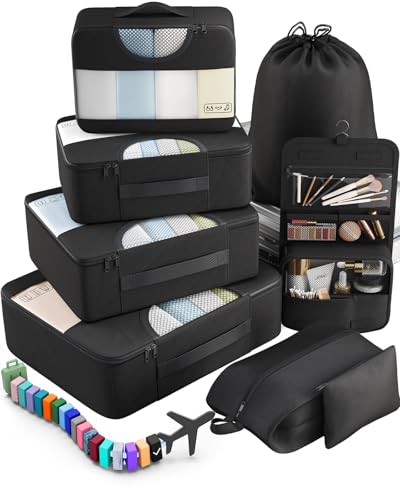In Khartoum, they use Type C and D power plugs and outlets. The voltage is 230V, and the frequency is 50Hz.
So, you’ll need a travel adapter in Khartoum. Their plugs and outlets are different from the Type A and B ones we use back in the States.
Quick Overview of the Plugs in Khartoum:
- Plug type in Khartoum: C and D
- Standard voltage: 230V
- Frequency: 50Hz
- Need a travel adapter? Yes, you do need a travel adapter
- Need a voltage converter? Only necessary for specific appliances
- Recommended plug adapter: Vintar Universal Travel Adapter Kit
The information you see here is carefully compiled from official power authority guidelines, global IEC standards, and real traveler feedback from around the world.
The Only Travel Adapter You’ll Need in Khartoum
Nothing is worse than running out of battery in Khartoum with the wrong adapter. We don’t sell them, but we’ve found the most reliable one—so you never have to worry about charging again:
Recommended Travel Plug Adapter
by 1,000+ travelers on Amazon
Already on your trip or just landed and realized you forgot your power adapter? It’s not ideal, but you’re probably fine—most places sell them. Still, packing one ahead of time makes things a lot smoother.
Khartoum is often combined with travel to Chad, Egypt, or Ethiopia. Since plug types can vary, it’s smart to check them all before you go.
Power Outlets in Khartoum
In Khartoum, they use Type C and D power plugs and outlets.
Type C

Type C outlets have two round prongs and no grounding pin. Type E and F plugs usually fit too, but grounded plugs will need an adapter.
Type D

Type D outlets have three large round prongs in a triangular layout and typically only accept Type D plugs, although Type C plugs might fit loosely and are not recommended for safe use.
Do You Need a Voltage Converter?
Before plugging in your electronics in Khartoum, check the voltage. It’s different from the 120V used in the U.S., so you’ll likely need a converter.
Always check the label on your device before plugging it in abroad. If it shows “100-240V, 50/60 Hz”, your device supports both 120V and 220-240V and doesn’t need a voltage converter. This is common for laptops, tablets, smartphones, cameras, and rechargeable toothbrushes.

Which Travel Devices May Need a Converter?
Play it safe with your electronics — browse the most trusted voltage converters here.
| Device | Need Converter? | Notes |
|---|---|---|
| Phone | ❌ No (usually) | Most modern phone chargers are dual voltage (100–240V) |
| Laptop | ❌ No (usually) | Check the power brick label for 100–240V |
| Hairdryer | ✅ Yes (often) | High wattage; many models are not dual voltage |
| Electric toothbrush | ⚠️ Check voltage | Some models are 110V only |
| Camera / DSLR | ❌ No (usually) | Most chargers are dual voltage |
| Power bank | ❌ No | Charges via USB, adapter is enough |
| Electric shaver / trimmer | ⚠️ Check voltage | Older or cheaper models may not support 230V |
| Tablet / iPad | ❌ No | All models are dual voltage |
| Portable fan | ✅ Yes (sometimes) | Many models are not compatible with 230V |
| Game console | ⚠️ Check voltage | Newer consoles like PS5 and Xbox are often dual voltage — check to be sure |
| Bluetooth speaker | ❌ No (usually) | Charges via USB |
| E-reader (Kindle, etc.) | ❌ No | USB charging only, no converter needed |
Top Travel Essentials to Pack
A good adapter is just the start. These other essentials help round out your packing list and keep things running smoothly.
Digital Luggage Scale
Packing Cubes
Power Bank
More About Khartoum
Khartoum sits right where the Blue Nile and White Nile meet, which makes for some seriously scenic riverside views. It’s a sprawling city made up of Khartoum proper, Bahri, and Omdurman—connected by bridges and buzzing with activity.
You can stroll along the Nile corniche at sunset, hit the Sudan National Museum to see ancient statues and mummies, and even catch a mesmerizing Sufi dance ritual at Omdurman’s Sheikh Hamad al-Nil tomb on Friday nights.
Don’t expect a polished tourist capital—traffic can be brutal and the heat intense—but Khartoum surprises with friendly faces, art galleries popping up, and a café culture that brings locals together over mint tea and chai.
Khartoum uses the same plugs and outlets as the rest of Sudan.




